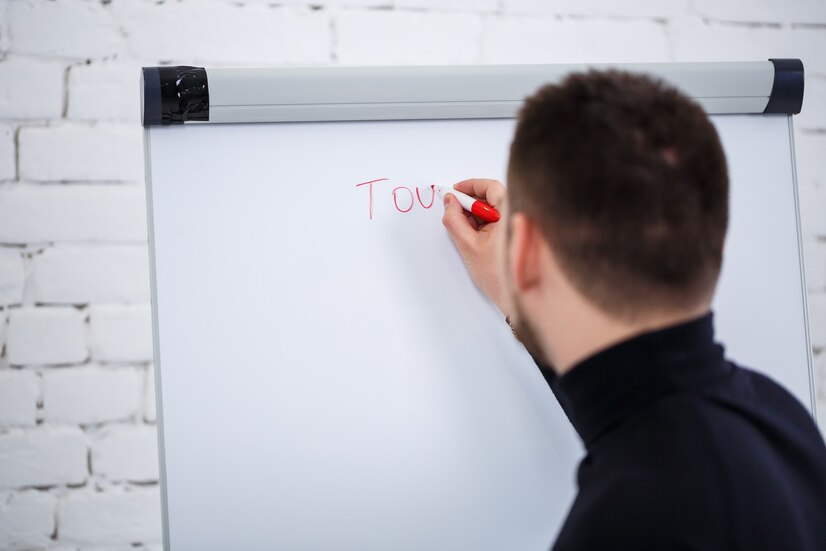In the realm of collaborative workspaces and educational settings, the choice of whiteboard surface material can significantly impact the writing experience and overall usability of the board. From traditional melamine to innovative glass and porcelain, each material offers unique advantages and considerations. This article explores the impact of whiteboard surfaces on the writing experience and evaluates which material reign’s supreme in different contexts.
Traditional Melamine: The Workhorse of Whiteboards
Melamine is the most common material used for whiteboard surfaces due to its affordability and durability. Here’s how it stacks up in terms of writing experience:
- Smoothness: Melamine surfaces typically offer a smooth writing experience, allowing markers to glide effortlessly across the board with minimal friction.
- Erasability: While melamine surfaces are generally easy to erase, they may become stained or ghosted over time with frequent use, requiring more frequent cleaning and maintenance.
- Affordability: Melamine whiteboards are cost-effective options for budget-conscious organizations and educational institutions, offering good performance at a lower price point.
Glass: Sleek and Stylish
Glass whiteboards have gained popularity in recent years for their sleek, modern appearance and smooth writing surface. Here’s how they fare in terms of writing experience:
- Clarity: Glass surfaces provide unparalleled clarity and vibrancy, enhancing the visibility of marker strokes and ensuring that writing stands out against the background.
- Durability: Glass whiteboards are highly durable and resistant to scratches, stains, and ghosting, making them ideal for high-traffic areas and long-term use.
- Ease of Cleaning: Glass surfaces are easy to clean and maintain, requiring only a simple wipe with a dry erase eraser or damp cloth to remove marker residue effectively.
Porcelain: The Gold Standard of Whiteboards
Porcelain whiteboards are renowned for their exceptional durability, longevity, and writing performance. Here’s why they stand out:
- Durability: Porcelain surfaces are the most durable option available, resistant to scratches, stains, and dents, ensuring that the board retains its pristine appearance and writing quality for years to come.
- Erasability: Porcelain surfaces offer superior erasability, with markers erasing cleanly and completely without leaving behind any ghosting or residue, even after repeated use.
- Magnetic Properties: Many porcelain whiteboards are magnetic, allowing users to attach documents, notes, and other materials to the board’s surface, enhancing its versatility and functionality.
Choosing the Right Surface Material
When selecting a whiteboard surface material, consider the following factors:
- Intended Use: Determine the primary use case for the whiteboard, whether it’s for daily meetings, classroom instruction, or long-term strategic planning.
- Budget: Consider your budget constraints and weigh the upfront cost of the whiteboard against its long-term durability and performance.
- Aesthetic Preferences: Take into account the overall aesthetic of the space and choose a whiteboard material that complements the existing decor and ambiance.
- Maintenance Requirements: Consider the ease of cleaning and maintenance associated with each surface material and choose one that aligns with your maintenance capabilities and preferences.
Conclusion
The choice of whiteboard surface material can have a significant impact on the writing experience, durability, and overall usability of the board. While each material offers distinct advantages and considerations, porcelain whiteboards are widely regarded as the gold standard for their exceptional durability, erasability, and longevity. However, glass whiteboards excel in providing a sleek, modern aesthetic, while melamine whiteboards offer affordability for budget-conscious buyers. By carefully evaluating the unique characteristics of each surface material and considering the specific needs of your environment, you can select the whiteboard that best suits your requirements and enhances collaboration and productivity in your workspace or classroom.





